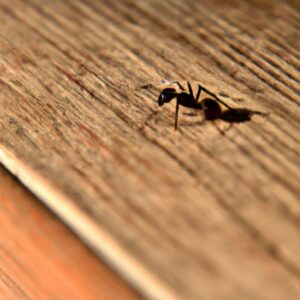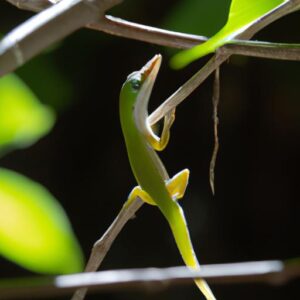Introduction
Have you ever wondered if you have a hedgehog secretly roaming around your garden? These adorable creatures, with their prickly spines and endearing snuffles, can be delightful additions to your outdoor space. In this article, we will explore the fascinating world of hedgehogs, their habitat, and why they are essential for a thriving garden ecosystem. Moreover, we’ll dive into the main focus of this piece: identifying whether you have a hedgehog in your own garden.
Brief Explanation of Hedgehogs and Their Habitat
Hedgehogs, also known as “gardeners’ friends,” are small, nocturnal mammals characterized by their spiky coat and stout bodies. They are native to Europe, Asia, and Africa and have become popular garden residents due to their beneficial impact on pest control. Hedgehogs are insectivores, feasting on slugs, snails, beetles, and other garden pests that can cause damage to plants.
Importance of Hedgehogs in the Garden Ecosystem
Hedgehogs play a vital role in maintaining a balanced garden ecosystem. By naturally controlling the population of harmful insects, they help protect your plants without the need for harmful pesticides. Their foraging habits also help aerate the soil, promoting healthy root growth and nutrient circulation. Furthermore, hedgehogs act as pollinators, spreading pollen as they move from flower to flower during their nightly escapades.
Overview of the Article’s Purpose and Focus on Identifying Hedgehogs in the Garden
Now that we understand the significance of hedgehogs in our gardens, it’s time to uncover whether these delightful creatures are gracing your outdoor sanctuary. In the following sections, we will explore the signs that indicate hedgehog activity in your garden. From visual cues like droppings and footprints to auditory hints such as rustling sounds, we will equip you with the knowledge to identify the presence of hedgehogs. So, let’s embark on this exciting journey and unravel the mystery of whether you have a hedgehog in your garden!
Signs of Hedgehogs in Your Garden
Visual Indicators
One of the first signs to look out for when trying to determine if you have a hedgehog in your garden is visual evidence. Keep an eye out for hedgehog droppings, which are usually dark brown or black and cylindrical in shape. These droppings may be found along their regular foraging paths or near potential food sources. Additionally, hedgehogs may leave behind distinct footprints, characterized by small pad marks with claw impressions. Look for these footprints in areas with soft soil or mud.
Another visual clue is the presence of hedgehog nests. Hedgehogs often create nests using leaves, twigs, and other natural materials. These nests, known as “hogs’ nests,” are usually located in secluded spots, such as under bushes or in dense vegetation. If you come across a neatly constructed, ball-shaped nest, there’s a good chance a hedgehog has made it their cozy home.
Auditory Cues
Listening for specific sounds during the night can also help you identify hedgehog activity. Hedgehogs are known for their distinctive snuffling and rustling sounds as they move through the undergrowth. These sounds are more prominent during the quiet hours, so grab a cup of tea, step outside, and let your ears guide you. Be patient, as hedgehogs can be quite stealthy, but their nocturnal antics are worth the wait.
Damage to Plants or Lawn
Hedgehogs are opportunistic feeders and will search for food in your garden. If you notice plants with partially eaten leaves or lawn areas with small holes or patches of upturned soil, it could be a telltale sign of hedgehog foraging. They have a particular fondness for slugs, snails, and earthworms, so areas where these creatures are abundant are likely to attract hedgehogs.
By keeping an eye out for these visual indicators, listening for distinct sounds, and observing any plant or lawn damage, you can become a hedgehog detective in your own garden. So, let’s continue our investigation and move closer to uncovering the truth about hedgehog inhabitants in your outdoor haven!
Encouraging Hedgehog Visitors
Gardens can be transformed into a haven for hedgehogs by implementing a few simple practices. By creating an inviting environment, you can attract these delightful creatures to your outdoor sanctuary. Let’s explore some effective ways to encourage hedgehog visitors.
A. Planting Native Flowers and Shrubs that Attract Their Prey
Hedgehogs are attracted to areas abundant with their preferred prey, such as slugs, snails, and insects. By planting native flowers and shrubs that attract these creatures, you create a buffet for hedgehogs. Consider incorporating plants like lavender, primrose, and marigold, which not only entice the prey but also add beauty to your garden. These natural food sources will tempt hedgehogs to explore your garden in search of a tasty meal.
B. Avoiding the Use of Pesticides and Chemicals Harmful to Hedgehogs
To create a hedgehog-friendly environment, it’s crucial to steer clear of pesticides and chemicals that can harm these adorable creatures. Hedgehogs are particularly sensitive to toxins, and exposure to pesticides can have detrimental effects on their health. Instead, opt for organic and natural pest control methods, such as companion planting and biological controls. This way, you protect both the hedgehogs and the delicate balance of your garden ecosystem.
C. Leaving out Food and Water Specifically for Hedgehogs
One of the most direct ways to encourage hedgehog visitors is by providing them with a readily accessible food and water source. You can leave out a dish of cat or dog food (preferably wet) and a shallow bowl of fresh water in a quiet corner of your garden. Hedgehogs are known to be opportunistic eaters, and these offerings will entice them to pay a visit. However, it’s essential to avoid feeding them milk, as hedgehogs are lactose intolerant.
By implementing these practices, you are not only attracting hedgehogs but also creating a sanctuary that supports their wellbeing. So, roll out the hedgehog welcome mat and watch as these charming creatures become regular visitors to your garden!
Monitoring Hedgehog Activity in the Garden
Do you want to keep track of the enchanting hedgehogs that grace your garden? Monitoring their activity not only allows you to appreciate their presence but also provides valuable insights into their behavior and population trends. In this section, we will explore different methods to observe and document hedgehog activity, enabling you to become a citizen scientist contributing to hedgehog conservation efforts.
Setting up Wildlife Cameras or Using Other Observation Methods
One of the most effective ways to monitor hedgehog activity is by setting up wildlife cameras in your garden. These cameras, equipped with motion sensors, capture footage of hedgehogs as they explore their surroundings during the night. By reviewing the recorded videos, you can gain a deeper understanding of their behavior, feeding patterns, and potential interactions with other wildlife.
If wildlife cameras are not accessible, there are alternative methods to observe hedgehogs. For instance, you can create a cozy hiding spot with some leaves and carefully observe it from a distance. This allows you to witness hedgehogs seeking refuge or foraging for food without disturbing their natural behavior.
Keeping a Record of Hedgehog Sightings and Behaviors
Maintaining a record of hedgehog sightings and behaviors is a valuable practice for understanding their presence and habits in your garden. Keep a notebook or a digital log where you can document each hedgehog encounter. Record details such as the date, time, location, and any noteworthy observations. This log will not only serve as a personal journal but can also contribute to scientific research and conservation efforts.
Engaging in Citizen Science Initiatives
As a passionate hedgehog enthusiast, you can actively contribute to the larger scientific community by participating in citizen science initiatives focused on hedgehog populations. Several organizations and research projects collect data from the public to gain insights into the distribution and health of hedgehog populations. By submitting your observations and records, you directly contribute to valuable research and conservation efforts.
So, grab your camera or notebook, embrace the role of a hedgehog detective, and join the growing network of citizen scientists dedicated to understanding and conserving these marvelous garden dwellers. Together, we can make a difference in protecting hedgehogs for generations to come.




